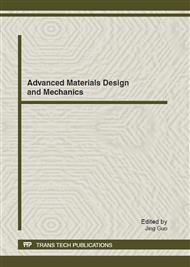p.500
p.504
p.509
p.517
p.521
p.525
p.529
p.533
p.539
TRIZ Based Tool Management Applied in Mechanical Heart Valve Engineering Systems
Abstract:
Artificial mechanical heart valve (MHV) replacement is the common cardiovascular surgical procedure, yet its effect is far from satisfaction. Most important reasons lie in the model design and choice of the materials in the fabrication of the prosthetic heart valves. Based on systematic design methodology of TRIZ theory (Russian acronym for Theory of Solving Inventive Problem), the device structure is analyzed by comparing the past successful designs generated during the evolution of MHV. This paper represents a modeling technique integrating the well-established TRIZ with the conflict and contradiction modeling, substance-field and product functional analysis tools and provides some important trends in evolutionary development of production systems in MHV design. By analyzing the structural behavior and material performance, a complex case study from the research of different structural patterns and characteristics of current tri-leaflet modeling shows the validity of TRIZ theory to guide MHV design.
Info:
Periodical:
Pages:
521-524
Citation:
Online since:
September 2012
Authors:
Keywords:
Price:
Сopyright:
© 2012 Trans Tech Publications Ltd. All Rights Reserved
Share:
Citation:


